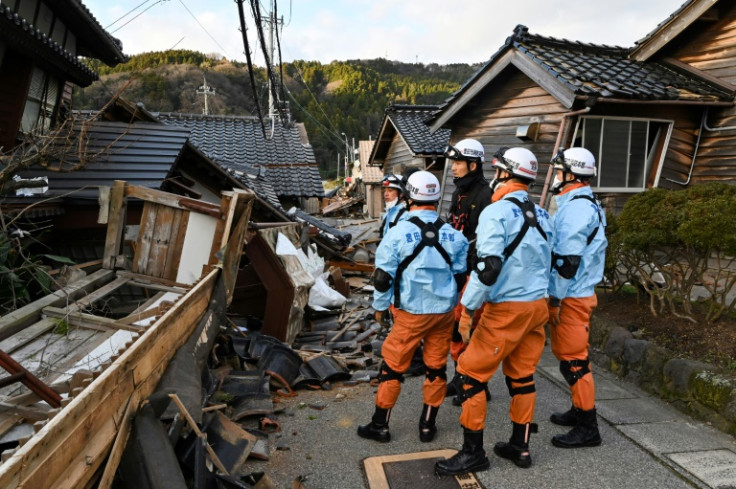
A woman in her 90s was pulled alive from under the rubble of a house that collapsed after a major earthquake hit Japan on New Year's Day.
The woman, who has not been identified yet, was rescued late Saturday night, exactly 124 hours after the quake. She was immediately rushed to a local hospital and given treatment for her wounds. According to a report by Japan's public broadcaster, NHK, she is doing "well enough" now.
According to the members of the rescue team, her legs were trapped under the damaged furniture, and it took hours for them to rescue her.
At least 126 people have lost their lives in the 7.5-magnitude earthquake that struck central Japan on January 1. The intensity was enough to trigger a tsunami alert as far as the eastern coast of Russia. It is being described as one of the biggest disasters to hit Japan since 2011.
Thousands were forced to flee their homes to seek shelter, while thousands of others were left without electricity and necessities for days. The authorities are still trying to provide help to the people stuck in shelters.
The rescue teams are also working round the clock to look for survivors. The worst-affected region has been Ishikawa prefecture. The highest number of deaths have been reported in Wajima city. More than 200 people remain unaccounted for. The death toll is expected to rise as rescuers battle aftershocks and poor weather.
Why is Japan so prone to earthquakes?
The country is hit by quakes regularly as it sits on top of three tectonic plates: North America, the Pacific, and the Philippine Sea. It experiences around 20% of the world's most powerful earthquakes every year.
It also lies on the Pacific "Ring of Fire" and has more than 100 active volcanoes. It is a horseshoe-shaped belt of fault lines and volcanoes that runs for some 40,000 kilometres. Many of the volcanoes in Japan are monitored 24/7 by its meteorological agency.
The seismically active Ring of Fire covers the South Pacific islands, up through Indonesia and Japan, across to Alaska, and down the west coast of the United States and Central and South America.
According to the Japanese government, the number of earthquakes on the peninsula has been increasing steadily since 2018. More than 400 earthquakes have been reported in the region since Monday. The authorities have warned of more such tremors in the coming days.
Devastating earthquakes have struck Japan in the past, claiming tens of thousands of lives. The magnitude 9.0 March 2011 earthquake that hit the Tohoku region triggered a tsunami that killed more than 18,500 people.







